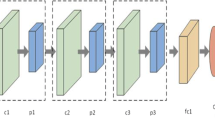Abstract
Developing a medical device or solution involves gathering biomedical data from different devices, which can have different communication protocols, characteristics and limitations. Thus, deploying a test lab to record experiments can be challenging, requiring the synchronisation of the source signals, processing of the information, storing it and extracting conclusions. In this work, we face this problem by developing an edge Internet of Things (IoT) system composed of a Raspberry Pi and an NVIDIA Jetson TX2 device (integrating an NVIDIA Pascal GPU). The information from two biomedical devices (Biosignals Plux and Polar Verity Sense) is synchronised and fused, interpolating the information and extracting features such as mean and standard deviation in real-time. In parallel, the Jetson TX2 device is able to execute a Deep Learning (DL) model in real-time as new data is received using the Message Queuing Telemetry Transport (MQTT) protocol. Also, an online learning approach involving a loss function that takes into account past predictions is proposed, as well as a density-based clustering algorithm that selects the most representative samples of the most repeated class. The system has been deployed in the Smart Home of the University of Almería. Results show that the proposed fusion scheme accuracy represents the intrinsic information of the received data and enables the DL model to run in real time. The next steps involve the deployment of the system in a hospital, in order to monitor epilepsy patients, create a robust dataset and detect epileptic seizures in real-time.
Access this chapter
Tax calculation will be finalised at checkout
Purchases are for personal use only
Similar content being viewed by others
References
imotions. https://imotions.com/. Accessed 19 Sept 2023
PLUX Biosignals. https://www.pluxbiosignals.com/. Accessed 13 July 2023
Blanco-Filgueira, B., García-Lesta, D., Fernández-Sanjurjo, M., Brea, V.M., López, P.: Deep learning-based multiple object visual tracking on embedded system for IoT and mobile edge computing applications. IEEE Internet Things J. 6(3), 5423–5431 (2019). https://doi.org/10.1109/JIOT.2019.2902141
Burns, A., et al.: Shimmer™-a wireless sensor platform for noninvasive biomedical research. IEEE Sens. J. 10(9), 1527–1534 (2010)
Greco, L., Percannella, G., Ritrovato, P., Tortorella, F., Vento, M.: Trends in IoT based solutions for health care: moving AI to the edge. Pattern Recogn. Lett. 135, 346–353 (2020)
Guk, K., et al.: Evolution of wearable devices with real-time disease monitoring for personalized healthcare. Nanomaterials 9(6), 813 (2019)
Lightbody, D., Ngo, D.M., Temko, A., Murphy, C.C., Popovici, E.M.: Host-based intrusion detection system for IoT using convolutional neural networks. In: 2022 33rd Irish Signals and Systems Conference (ISSC), pp. 1–7 (2022)
McCarthy, C., Pradhan, N., Redpath, C., Adler, A.: Validation of the empatica e4 wristband. In: 2016 IEEE EMBS International Student Conference (ISC), pp. 1–4. IEEE (2016)
Otseidu, K., Jia, T., Bryne, J., Hargrove, L., Gu, J.: Design and optimization of edge computing distributed neural processor for biomedical rehabilitation with sensor fusion. In: 2018 IEEE/ACM International Conference on Computer-Aided Design (ICCAD), pp. 1–8 (2018). https://doi.org/10.1145/3240765.3240794
Raja, J.M., et al.: Apple watch, wearables, and heart rhythm: where do we stand? Ann. Transl. Med. 7(17) (2019)
Sakib, S., Fouda, M.M., Fadlullah, Z.M.: A rigorous analysis of biomedical edge computing: an arrhythmia classification use-case leveraging deep learning. In: 2020 IEEE International Conference on Internet of Things and Intelligence System (IoTaIS), pp. 136–141 (2021). https://doi.org/10.1109/IoTaIS50849.2021.9359721
Shi, W., Cao, J., Zhang, Q., Li, Y., Xu, L.: Edge computing: vision and challenges. IEEE Internet Things J. 3(5), 637–646 (2016)
Utomo, D., Hsiung, P.A.: Anomaly detection at the IoT edge using deep learning. In: 2019 IEEE International Conference on Consumer Electronics - Taiwan (ICCE-TW), pp. 1–2 (2019). https://doi.org/10.1109/ICCE-TW46550.2019.8991929
Van Steenkiste, T., Groenendaal, W., Deschrijver, D., Dhaene, T.: Automated sleep apnea detection in raw respiratory signals using long short-term memory neural networks. IEEE J. Biomed. Health Inform. 23(6), 2354–2364 (2019). https://doi.org/10.1109/JBHI.2018.2886064
Verdru, J., Van Paesschen, W.: Wearable seizure detection devices in refractory epilepsy. Acta Neurol. Belg. 120, 1271–1281 (2020)
Acknowledgements
This work has been funded by the projects R+D+i PID2021-123278OB-I00 and PDC2022-133370-I00 from MCI-N/AEI/10.13039/501100011033/ and ERDF funds; and the Department of Informatics of the University of Almería. M. Lupión is a fellowship of the FPU program from the Spanish Ministry of Education (FPU19/02756).
Author information
Authors and Affiliations
Corresponding author
Editor information
Editors and Affiliations
Rights and permissions
Copyright information
© 2023 The Author(s), under exclusive license to Springer Nature Switzerland AG
About this paper
Cite this paper
Lupión, M., Romero, F., Romero, L.F., Sanjuan, J.F., Ortigosa, P.M. (2023). Edge IoT System for Wearable Devices: Real-Time Data Processing, Inference, and Training for Activity Monitoring and Health Evaluation. In: Bravo, J., Urzáiz, G. (eds) Proceedings of the 15th International Conference on Ubiquitous Computing & Ambient Intelligence (UCAmI 2023). UCAmI 2023. Lecture Notes in Networks and Systems, vol 842. Springer, Cham. https://doi.org/10.1007/978-3-031-48642-5_13
Download citation
DOI: https://doi.org/10.1007/978-3-031-48642-5_13
Published:
Publisher Name: Springer, Cham
Print ISBN: 978-3-031-48641-8
Online ISBN: 978-3-031-48642-5
eBook Packages: Intelligent Technologies and RoboticsIntelligent Technologies and Robotics (R0)




